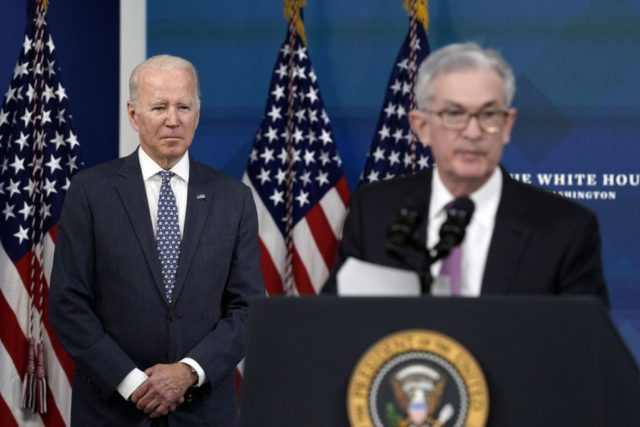Dec. 15 (UPI) — Amid rising inflation, the Federal Reserve decided Wednesday to maintain the existing federal funds rate of between zero and 0.25%.
However, the Fed also forecasted three interest rate hikes next year, followed by further increases in 2023 and 2024.
“Supply and demand imbalances related to the pandemic and the reopening of the economy have continued to contribute to elevated levels of inflation. Overall financial conditions remain accommodative, in part reflecting policy measures to support the economy and the flow of credit to U.S. households and businesses,” reads a statement on the decision.
The Federal Reserve’s Federal Open Market Committee (FOMC) announced it would slowly begin curtailing the monthly pace of its net asset purchases by $20 billion for Treasury securities and $10 billion for agency mortgage-backed securities.
In January, the FOMC will increase its holdings of Treasury securities by at least $40 billion per month and of agency mortgage‑backed securities by at least $20 billion per month.
It anticipates “similar reductions in the pace of net asset purchases will likely be appropriate each month, but it is prepared to adjust the pace of purchases if warranted by changes in the economic outlook.”
Fed Chairman Jerome Powell and analysts have said rising U.S. inflation is “transitory” and they expect it to dissipate as the economy continues to recover from the impact of the COVID-19. Continued supply chain shortages, they said, has been a factor in part in keeping inflation high.
The FOMC acknowledged positive job gains in recent months, and declining unemployment rate. But it also added that “supply and demand imbalances related to the pandemic and the reopening of the economy have continued to contribute to elevated levels of inflation. Overall financial conditions remain accommodative, in part reflecting policy measures to support the economy and the flow of credit to U.S. households and businesses.”
The last time the Federal Reserve increased rates was December 2018.
The Fed began the emergency bond program in March 2020 immediately after the pandemic began. It is scheduled to end in June.
“I think getting out of the easing business is very much overdue,” Rick Rieder, chief investment officer of global fixed income at Black Rock, told CNBC.
A worker pumps gas at a station in New York City on November 26. Rising costs of energy have been the primary drivers for increases in inflation in the United States. Photo by John Angelillo/UPI
The Omicron COVID-19 variant is seen as a wildcard, economically. The new mutation has helped worsen global supply chain bottlenecks and worker shortages.
Last week, government figures showed that inflation in the United States has risen over the past 12 months by the greatest amount since 1982.

COMMENTS
Please let us know if you're having issues with commenting.